- Wondering how to get Monopoly GO! free rolls? Well, you’ve come to the right place. In this guide, we provide you with a bunch of tips and tricks to get some free rolls for the hit new mobile game. We’ll …
Best Roblox Horror Games to Play Right Now – Updated Weekly
By Adele Wilson
Our Best Roblox Horror Games guide features the scariest and most creative experiences to play right now on the platform!The BEST Roblox Games of The Week – Games You Need To Play!
By Sho Roberts
Our feature shares our pick for the Best Roblox Games of the week! With our feature, we guarantee you'll find something new to play!Type Soul Clan Rarity Guide – All Legendary And Common Clans Listed!
By Nathan Ball
Wondering what your odds of rolling a particular Clan are? Wonder no more, with my handy Type Soul Clan Rarity guide.
Could ‘The Outcast’ and a Spreadsheet Redefine Interactive Fiction?
The Outcast is a game that exists well outside the normal bounds of iOS gaming, appropriate enough for its title. What was once an app that confused Apple reviewers as it seemed to do nothing has blossomed into a rather …
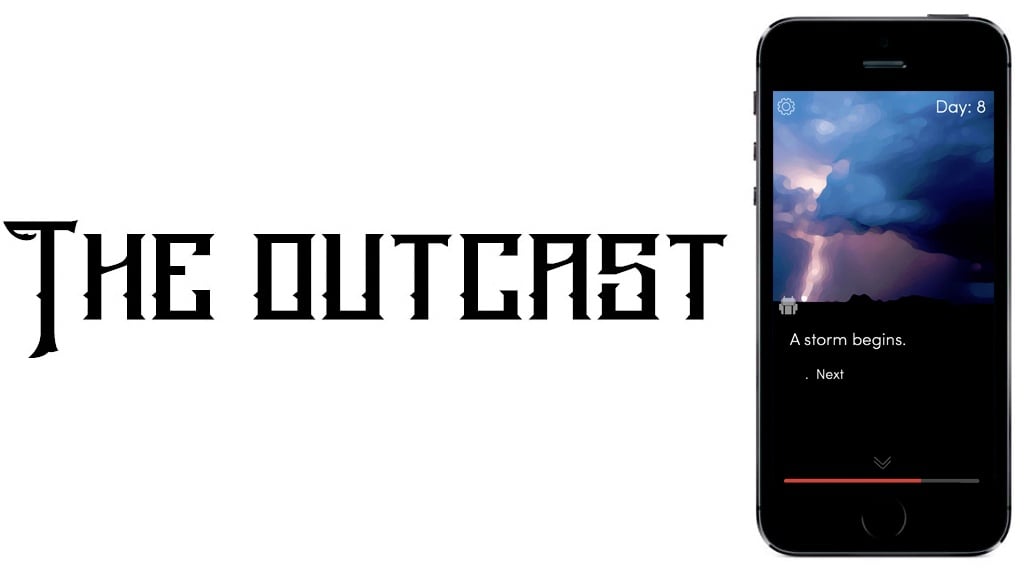
The Outcast is a game that exists well outside the normal bounds of iOS gaming, appropriate enough for its title. What was once an app that confused Apple reviewers as it seemed to do nothing has blossomed into a rather fascinating interactive fiction experience that its developers want to be the start of something bigger for the genre as a whole. They want to bring the strengths of gaming, in terms of dynamic storytelling and experiences, into a standard interactive fiction experience.
The Outcast released initially about six months ago, and was a very odd duck. It was a narrative game with crude visuals, had bugs, and seemingly would have players hit a brick wall in terms of what happens. You could load the game, and it would ask you to wait, and you couldn’t do anything. I spoke to Kurt Bieg of Simple Machine Games back at launch, and he told me how he had to explain to Apple about the app, that there was a point to it. That waiting for another event to happen was the whole idea. This was a slow burn of an interactive fiction experience.
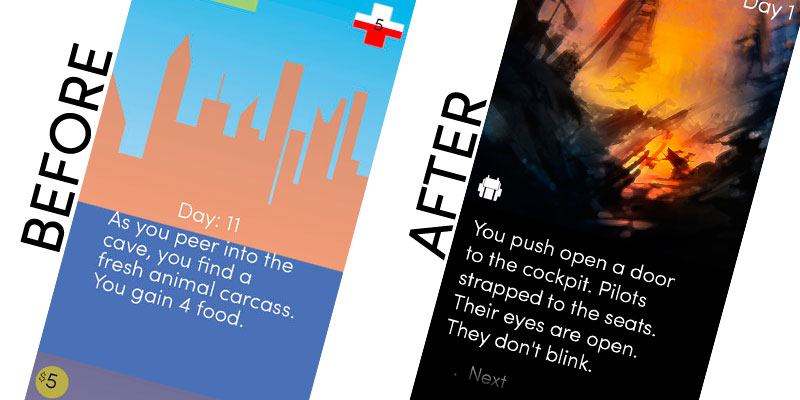
The Outcast never really caught any traction, and it had some bugs, but the team kept working on it, improving it, bringing on a new writer, and trying to overhaul it to make it exactly what they envisioned it to be. And starting today, The Outcast’s latest version perhaps best represents Simple Machine’s vision at creating the foundation for a unique interactive fiction experience that they want to branch out into other apps and games down the road.
How The Outcast works is that you launch the app, and you get a story event. Sometimes you get a choice, something to interact with, or sometimes you just get to read a passage and that’s it. This is intentional – the idea is that you’re someone just getting your bearings in a strange world, so the disjointedness you have is meaningful. You can only really play the game in short bursts every couple hours or so, as you get pinged by a notification when the next event is ready. What this does, too, is to make the game feel a bit more modern, is to get you to come back again and again. Many games send push notifications as reminders that, say, a timer has expired, or just a nudge to play again. Few desire to nudge the player that they have new story to read, but that’s what The Outcast does.
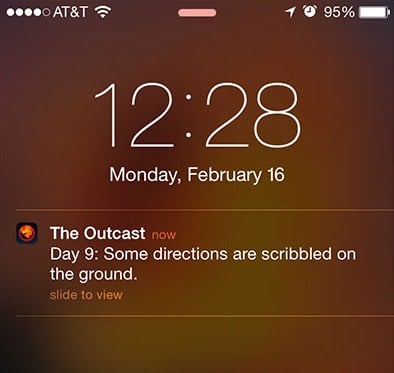
What’s impressive about how The Outcast works is that the game is ultimately powered by a spreadsheet that exists on Google Docs, which the game pings back to for its many responses and branching paths. While the spreadsheet has its own language for use right now, this is a very fascinating appropriation of freely-available consumer technology in a way that fosters creativity. Essentially, when something happens, it’s possible for a random event to get pulled to happen next. But those events can then reference back previous events if necessary, offering choices if the player did something in the past, and possibly affecting the story in the future. As well, this makes it easy for Simple Machine to change the story on the fly, making improvements or adding interesting content as need be. The game does offer links to the Simple Machine forums – Kurt Bieg has said repeatedly that he sees fan feedback as a key part of the experience.
While interactive fiction has offered complexity before – Inkle is doing a great job at advancing the genre and has been recognized for games like 80 Days – it’s the remarkably simple technology behind the scenes that’s so intriguing. It’s something that with a bit of understanding of the scripting at play, someone else could make an experience like The Outcast. Not necessarily one that has the time-lapse features of the game, but something where they could build a dynamic story that’s different every time, that they could keep adding surprises to just by changing a Google spreadsheet.
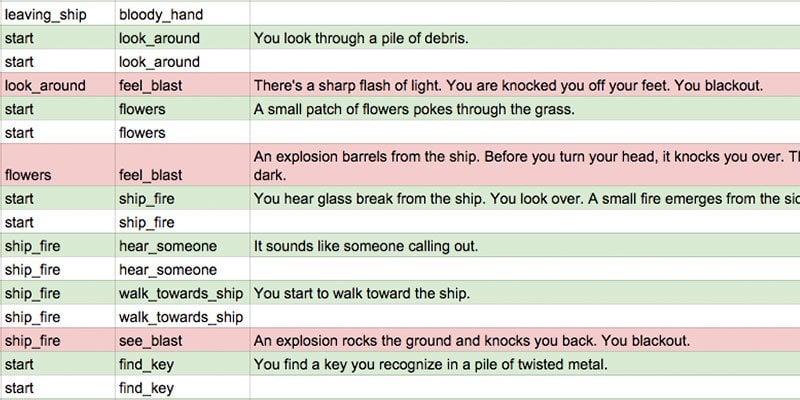
And that’s what Simple Machine has designs on doing. They call their technology the Firewood engine, a reference to “chopping up the tree” with all the story branches their technology supports. It’s something that they eventually want to bring to the general public in some form. They want to eventually release the project as open source complete with tutorials and API documentation so that people could make their own branching stories. Additionally, they want to create visual editors to make them more accessible to people, possibly even going the Kickstarter route down the road.
But in playing The Outcast, the star of this technology, I find myself fascinated by what’s going on. Interactive fiction can be heavily-produced, akin to 80 Days. But it also has a particular joy of accessibility for people who want to dabble into making interactive experiences, thanks to engines like Twine. The written word has the strength of being perhaps the easiest to create for anyone. The idea that The Outcast could be the catalyst for creating more complicated experiences, ones that change and evolve and have unpredictability to them, while not losing their accessibility, is utterly astonishing.
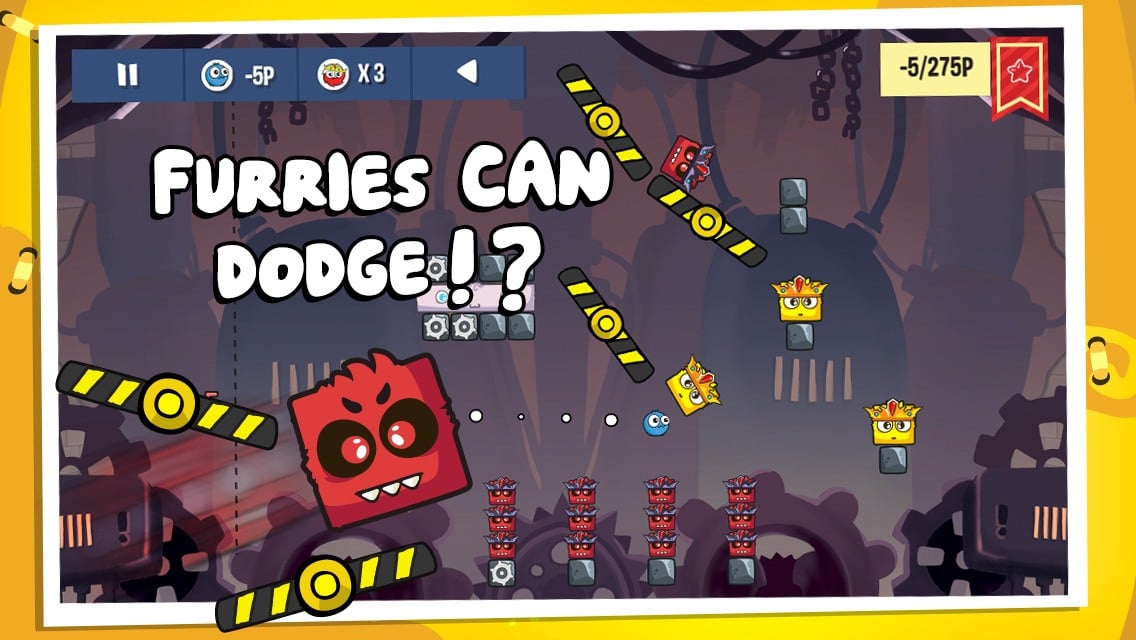
While The Outcast is interesting enough – the way that players interact with it is truly unique – and more story will be coming to it in future updates, it’s the possibilities of what could be created with the tools behind The Outcast that really make this game so interesting.
The Outcast: Episode 1 is available on the App Store for $1.99.
More articles...
Monopoly GO! Free Rolls – Links For Free Dice
By Glen Fox
Wondering how to get Monopoly GO! free rolls? Well, you’ve come to the right place. In this guide, we provide you with a bunch of tips and tricks to get some free rolls for the hit new mobile game. We’ll …Best Roblox Horror Games to Play Right Now – Updated Weekly
By Adele Wilson
Our Best Roblox Horror Games guide features the scariest and most creative experiences to play right now on the platform!The BEST Roblox Games of The Week – Games You Need To Play!
By Sho Roberts
Our feature shares our pick for the Best Roblox Games of the week! With our feature, we guarantee you'll find something new to play!Type Soul Clan Rarity Guide – All Legendary And Common Clans Listed!
By Nathan Ball
Wondering what your odds of rolling a particular Clan are? Wonder no more, with my handy Type Soul Clan Rarity guide.







